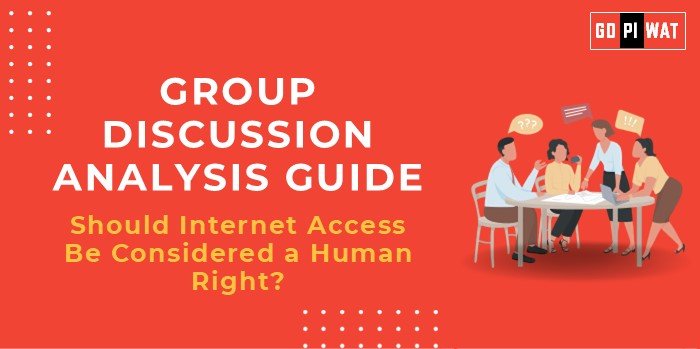📋 Should Internet Access Be Considered a Human Right?
🌟 Introduction to the Topic
- 🌐 Context Setting: “In the digital age, the internet has become a critical enabler of economic development, social progress, and individual empowerment worldwide. The debate on whether internet access should be considered a human right is gaining momentum across nations, especially with increasing dependence on digital connectivity for essential services.”
- 📚 Background: The United Nations first recognized the role of internet access as a potential human right in 2016, emphasizing its importance in enabling freedom of expression and access to information. Internet access has since grown into a fundamental necessity for education, healthcare, business, and government services.
📊 Quick Facts and Key Statistics
- 🌍 Global Internet Users: Over 5.16 billion people were connected as of 2023, representing about 65% of the global population.
- 📈 India’s Internet Usage: Approximately 900 million internet users as of 2024, showcasing a massive digital leap in recent years.
- 📉 Digital Divide: As of April 2024, 95.15% of India’s villages have 3G or 4G mobile internet connectivity. However, as of 2022, only 52% of the rural population were active internet users, highlighting a significant digital divide.
- 🇪🇪 Global Comparisons: Countries like Estonia have declared internet access a basic human right, leading to near-universal digital literacy.
🤝 Stakeholders and Their Roles
- 🏛️ Government Agencies: Responsible for ensuring affordable access, promoting digital literacy, and developing infrastructure.
- 💼 Private Companies: Provide technological solutions, invest in broadband networks, and enhance connectivity reach.
- 🌍 International Organizations: Advocate for universal access, research digital inclusion, and set policy guidelines.
- 🙋 Citizens: Beneficiaries of internet access, which enables education, employment, and civic engagement.
🎯 Achievements and Challenges
🏆 Achievements
- 💳 Financial Inclusion: India’s UPI platform demonstrates the power of internet connectivity in driving financial inclusion.
- 📂 E-Governance Successes: Programs like DigiLocker and BharatNet have boosted public service access.
- 🎓 Digital Literacy Initiatives: The PMGDISHA initiative has trained millions in basic digital skills.
⚠️ Challenges
- 📉 Digital Divide: Significant urban-rural disparity in internet access.
- 💰 Affordability: High cost of connectivity for marginalized communities.
- 🔒 Cybersecurity Threats: Growing incidents raise concerns about online safety and trust.
🌍 Global Comparisons
- 🇪🇪 Estonia: Offers universal digital access, achieving near-universal digital literacy.
- 🇺🇸 United States: Even in advanced nations, gaps persist in rural areas, highlighting global disparities in access.
📖 Case Studies
- 🇮🇳 Kerala in India: High digital literacy rates and e-governance delivery make Kerala a model for inclusive internet access.
💬 Structured Arguments for Discussion
- 👍 Supporting Stance: “Recognizing internet access as a human right would empower marginalized communities, bridge the digital divide, and promote socio-economic equality.”
- 👎 Opposing Stance: “Internet access, though critical, should be viewed as a utility rather than a right, as it requires substantial resource allocation and cannot be universally guaranteed.”
- ⚖️ Balanced Perspective: “While internet access holds transformative potential, achieving this goal demands addressing structural barriers such as affordability, literacy, and cybersecurity.”
💡 Effective Discussion Approaches
- 📊 Opening Techniques:
- Statistical Impact: “Today, over 65% of the global population has internet access, but large gaps remain, especially in rural and underprivileged areas.”
- Contrast Approach: “While digital access has revolutionized governance and education globally, millions remain excluded from this revolution.”
- 🔄 Counter-Argument Handling:
- Rebuttal Example: “While infrastructure costs are high, public-private partnerships can minimize expenses and maximize access, as seen in successful case studies.”
📋 SWOT Analysis
✅ Strengths
- 💪 Empowers citizens, boosts economic growth, enhances education.
❌ Weaknesses
- 💸 High cost of rollout, digital literacy gaps.
📈 Opportunities
- 🤝 Public-private collaborations, technological innovations.
⚠️ Threats
- 🔒 Cybersecurity issues, socio-economic disparities.
🎓 Connecting with B-School Applications
- 💡 Real-World Applications: Discussions around internet access and digital equity can inform projects on digital transformation, social entrepreneurship, and public policy.
- ❓ Sample Interview Questions:
- “What are the socio-economic benefits of universal internet access?”
- “Discuss potential barriers to internet access being recognized as a human right.”
- 📚 Insights for B-School Students:
- Internet access can be a springboard for initiatives aimed at social impact and digital policy reforms.


